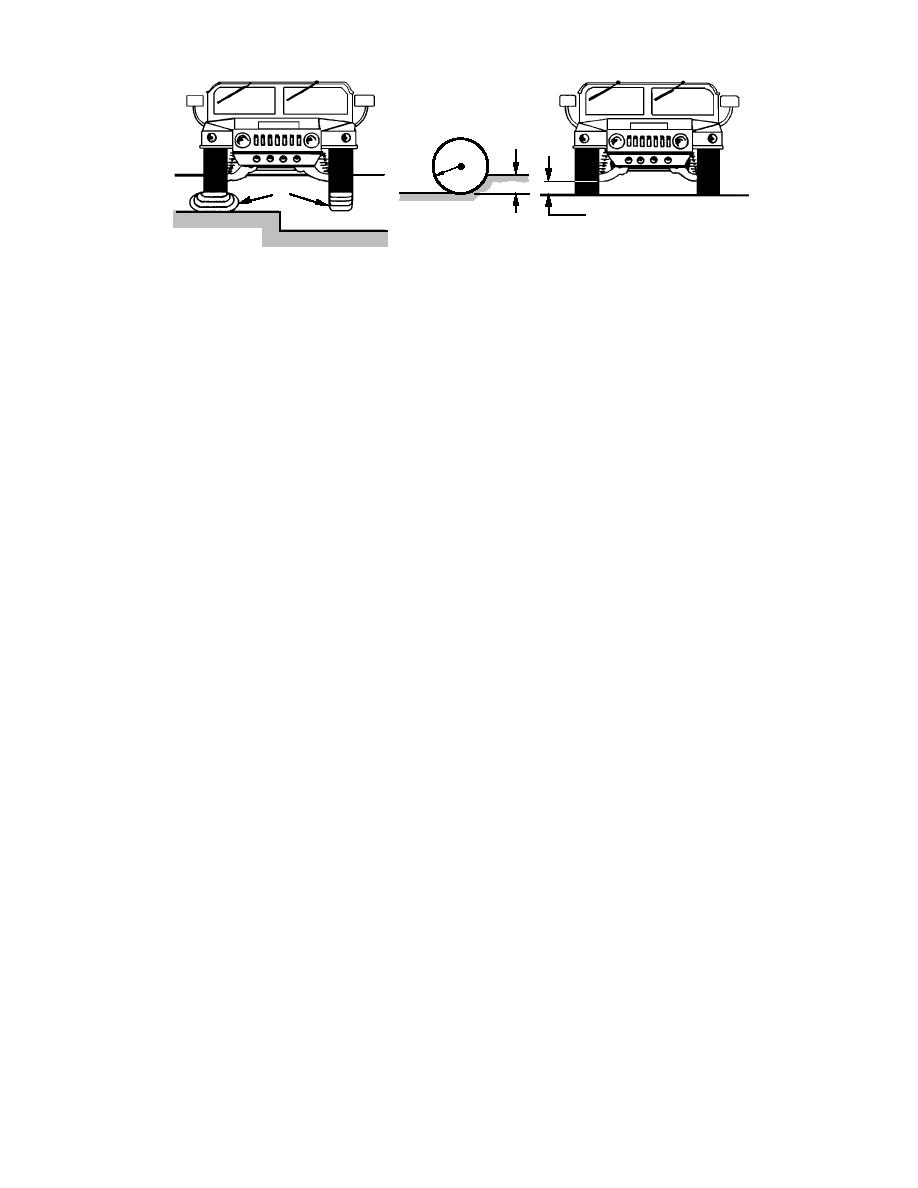
z, Sinkage
r
Pressure Bulb
z = 2/3 r
Undercarriage Clearance
Shallow
Deep
Figure 1. Determining whether a snowpack is considered shallow or deep.
good has not been fully investigated under win-
be less than the vehicle ground clearance. Inter-
ter conditions. Except for an approximation of
estingly, whether a given snowpack thickness is
speed reduction caused by vehicle slip in snow
deep or shallow depends on the strength of the
(discussed below), it is not addressed by any spe-
snow and the characteristics of the vehicle to be
cific cold regions models. Effects on speed deter-
operated.
mined for temperate climatic conditions should
Since an assessment of whether a given snow
apply to winter as a first approximation.
condition is shallow or deep requires detailed
Vehicle mobility in snow depends on snow
knowledge of the applied load and snowpack re-
depth, snow density, crystal structure of the snow
sponse, we suggest two guidelines for making
grains, liquid water content, stratification in the
this determination. These guidelines are based on
snowpack and virtually anything that affects the
the amount of sinkage calculated in relation to ei-
mechanical characteristics of the snow cover. An
ther the tire radius or the undercarriage clearance
overview of snow characterization measurements
as illustrated in Figure 1.
used for vehicle mobility and snow pavements is
given in Shoop (1993b), Shoop and Alger (1993)
Undisturbed snow on
and Abele (1990). Snow strength characterization
a firm substrate
is reviewed in Shapiro et al. (in prep.). To fully
We describe undisturbed snow as snow that
describe a snowpack in terms of its physical and
has been driven over by less than four vehicles.
mechanical properties is time consuming and re-
We chose this value based on a limited number of
quires sophisticated equipment and specialized
measurements of pressure bulb density, where
techniques. Since the models described in this re-
we noted that it takes several wheel passes over
port were designed for tactical use, it was unreal-
the same track to approach the critical density of
istic for the models to require as input many of
snow. (Critical density is generally accepted to be
0.55 Mg/m3, which represents the maximum den-
the traditional scientific measurements. The algo-
rithms we describe here rely solely on the most
sity that can be attained by snow grain rearrange-
basic snow parameters: depth and density.
ment. An increase in density beyond this requires
deformation of individual ice grains.) Further, to
be called undisturbed snow it must have a pre-
vehicle-passage density of less than 0.55 Mg/m3.
SHALLOW SNOW
This is almost always the case for snow, even in
For mobility purposes, snow depth can be cat-
polar regions.
egorized as either shallow or deep, the difference
If the terrain underlying the snow has a rating
being based on the response of the snowpack to
cone index (RCI) (Shoop 1993a) value high enough
the load applied by the vehicle. If the region of
to fully support the vehicle of interest with no sink-
disturbed snow under the vehicle's running gear,
age, mobility is assumed to be unaffected by the
substrate. We consider an RCI value of 100 or
called the pressure bulb, extends to the ground or
greater to be adequate to resist sinkage. Nearly all
pavement under the snow cover, then the snow is
paved surfaces and frozen soils have an RCI greater
considered shallow. If the pressure bulb is suspend-
than 100. For undisturbed snow on a firm substrate,
ed in the snowpack, a deep snow condition exists.
sinkage will only occur in the snow, and calcula-
An additional constraint for the shallow snow case
tion of traction and resistance is straightforward.
for our models is that the sinkage of the vehicle
2



 Previous Page
Previous Page
